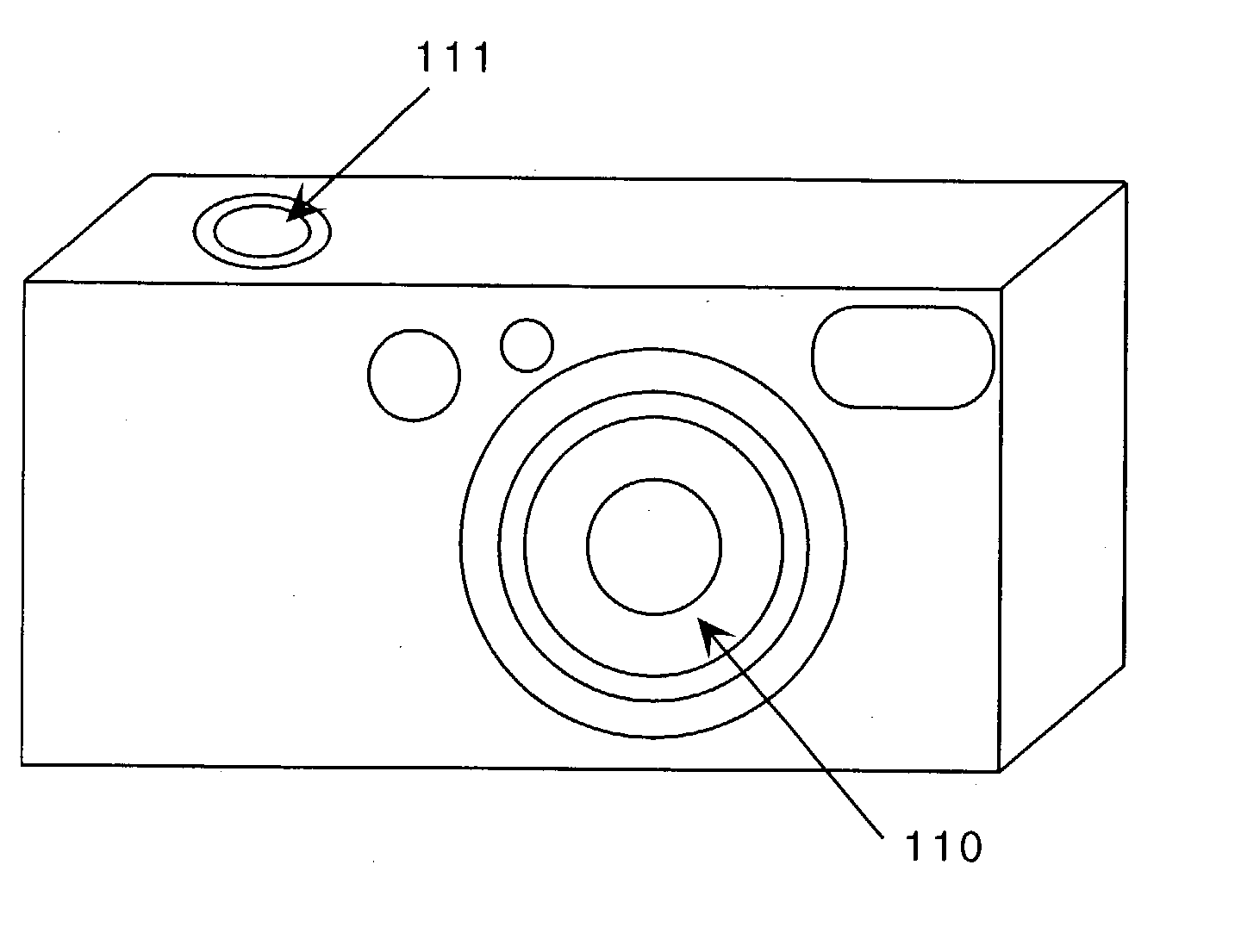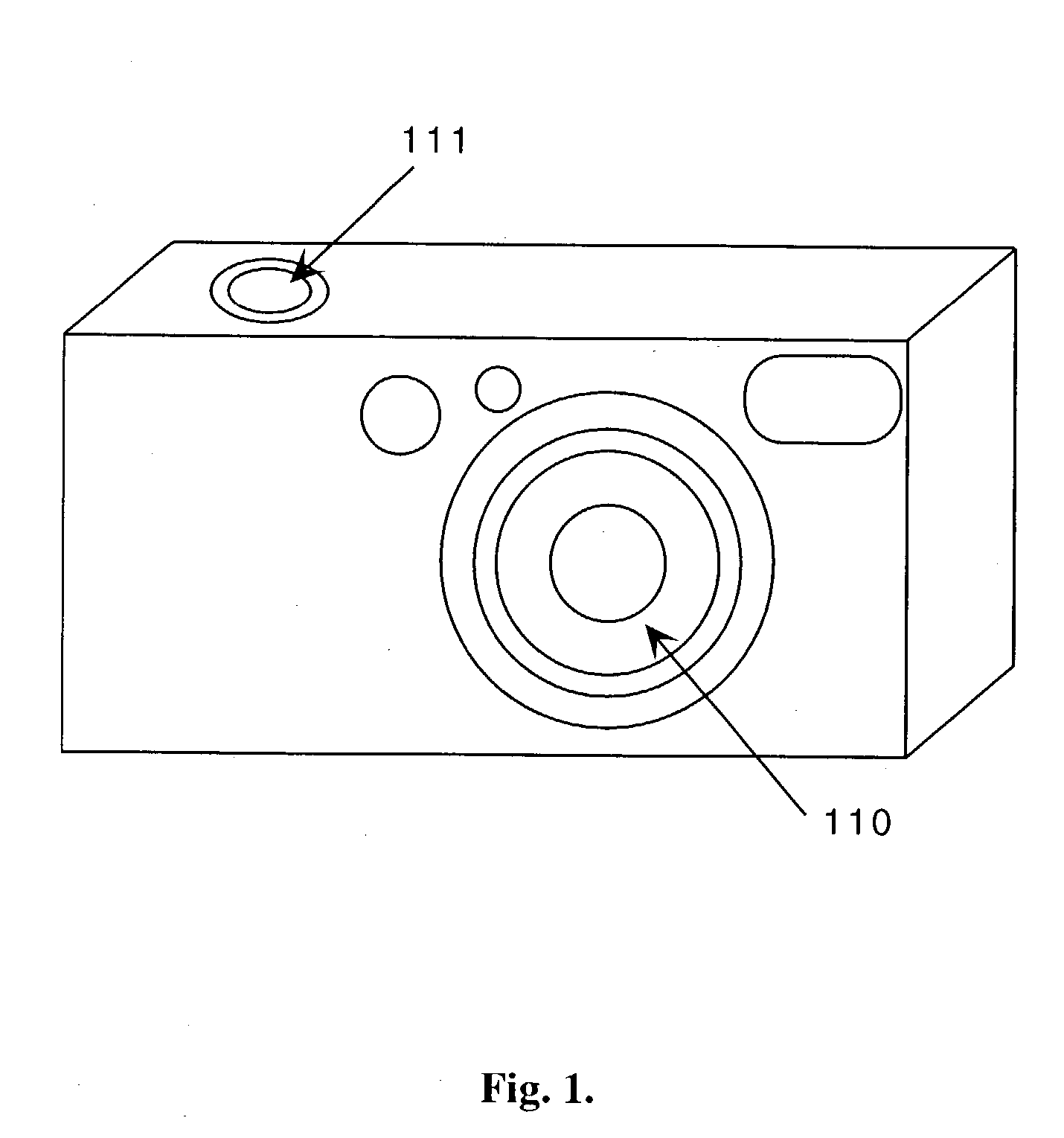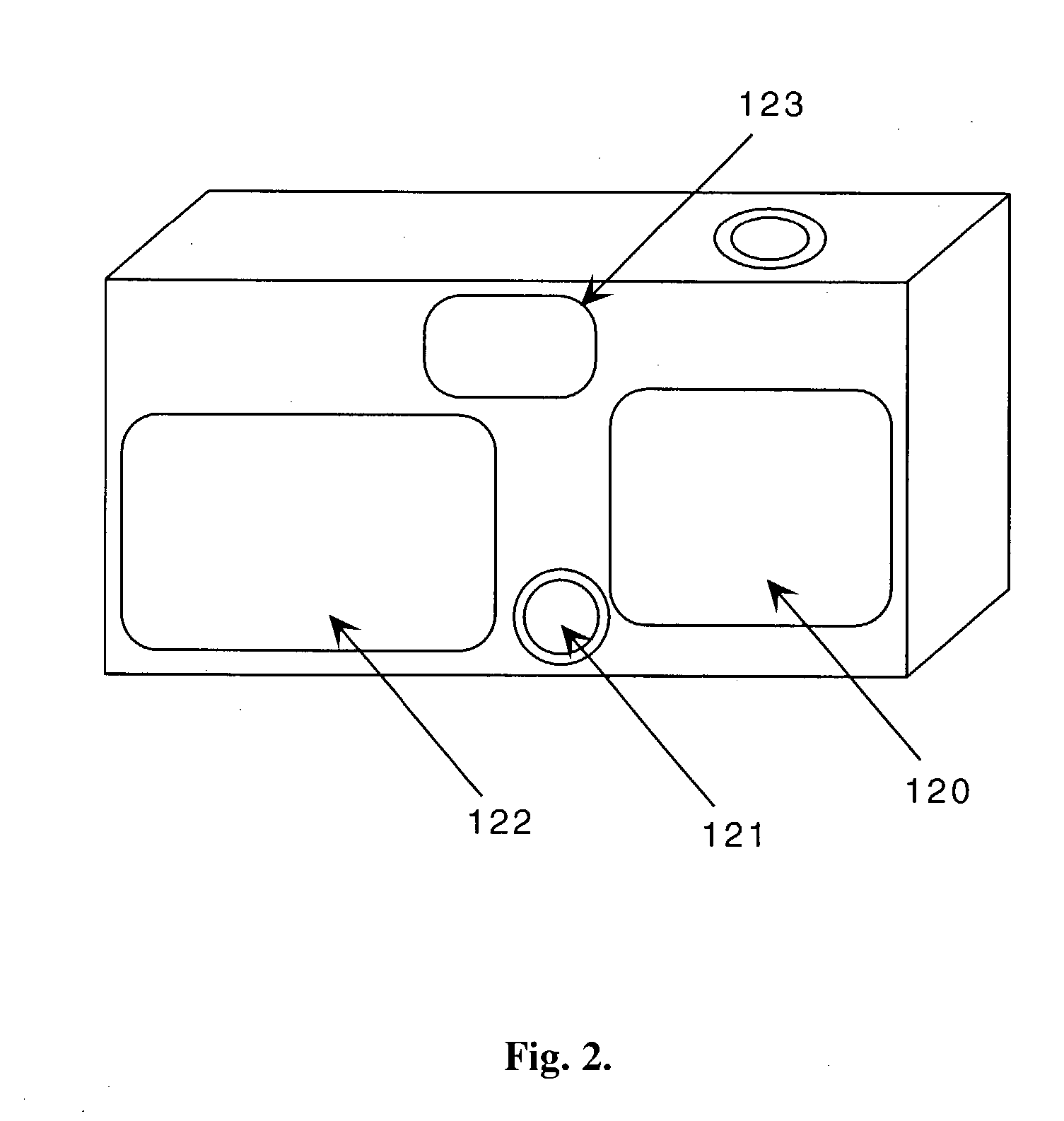Cameras
a technology of cameras and lenses, applied in the field of cameras, can solve the problems of difficult to maintain objects in focus, difficult to find the optimal exposure level for objects in a scene with a high level of contrast, and difficult to obtain the optimal exposure and focus levels for all objects
- Summary
- Abstract
- Description
- Claims
- Application Information
AI Technical Summary
Benefits of technology
Problems solved by technology
Method used
Image
Examples
embodiment 1
[0038] Embodiment 1
[0039] The z-axis is the screen depth that extends from the camera lens 110 to infinity. The depth of field is the area of the z-axis in which objects are in focus. Typically, when zoomed in, the depth of field is more shallow than when zoomed out. Furthermore, a large aperture leads to a shallow depth of field. Thus, when objects 140, 141, 142 are widely scattered along the z-axis as shown in FIG. 4, it is difficult to maintain all the objects in focus. The present invention solves this problem by taking several images of the objects with different focus levels. Then, the camera produces a new sharper image by combining these several images. It is noted that the images should be stored in a digital format. For instance, possible image storing means include a nonvolatile memory, hard drive, and a magnetic tape that can record digital data.
[0040] It is noted that the camera takes several images of the objects with different focus levels, even though the user presse...
embodiment 2
[0043] Embodiment 2
[0044] When one tries to combine several images that are taken with different focus levels over a period of time, the images first need to be registered. Due to the shaking of the camera and the movements of objects, the images may be slightly shifted against each other. Although most of this kind of shift can be corrected through use of the registration operation which includes shift and rotation, some kind of distortion may be inevitably introduced. In order to solve this problem, the present invention provides a camera that has several sensors that can operator at different focus levels.
[0045] For instance, FIG. 9 shows an example of a camera that has several sensors. First, the incoming light 190 is split into three beams by a prism 191. It is assumed that the incoming light 190, which is coming through the main lens barrel, is focused on an object in the middle. The camera has two focus-adjusting means. The long-distance focus-adjusting means 195 corrects blu...
embodiment 3
[0048] Embodiment 3
[0049] Sometimes, a camera operator intentionally wants to have a shallow depth of field. With a shallow depth of field, one can emphasize an object of interest. In order to obtain this kind of effect, a high power zoom lens or telephoto lens is typically required. However, the idea and teaching of the present invention can be used to obtain this kind of effect without such expensive lens. First, the user selects an object of interest 151 using pointing means 150. The pointing means can be moved within the viewfinder using a joystick 130 or a mouth-pad 120 or the kind, as described previously. Then the camera applies a segmentation method to extract the area of the object of interest 151. Then, the camera takes several shots with different focus levels and determines which shot provides the sharpest image for the object of interest. It also determines which shots provide blurred images for the background. Finally, the camera produces a new image where only the obj...
PUM
 Login to View More
Login to View More Abstract
Description
Claims
Application Information
 Login to View More
Login to View More - R&D
- Intellectual Property
- Life Sciences
- Materials
- Tech Scout
- Unparalleled Data Quality
- Higher Quality Content
- 60% Fewer Hallucinations
Browse by: Latest US Patents, China's latest patents, Technical Efficacy Thesaurus, Application Domain, Technology Topic, Popular Technical Reports.
© 2025 PatSnap. All rights reserved.Legal|Privacy policy|Modern Slavery Act Transparency Statement|Sitemap|About US| Contact US: help@patsnap.com



